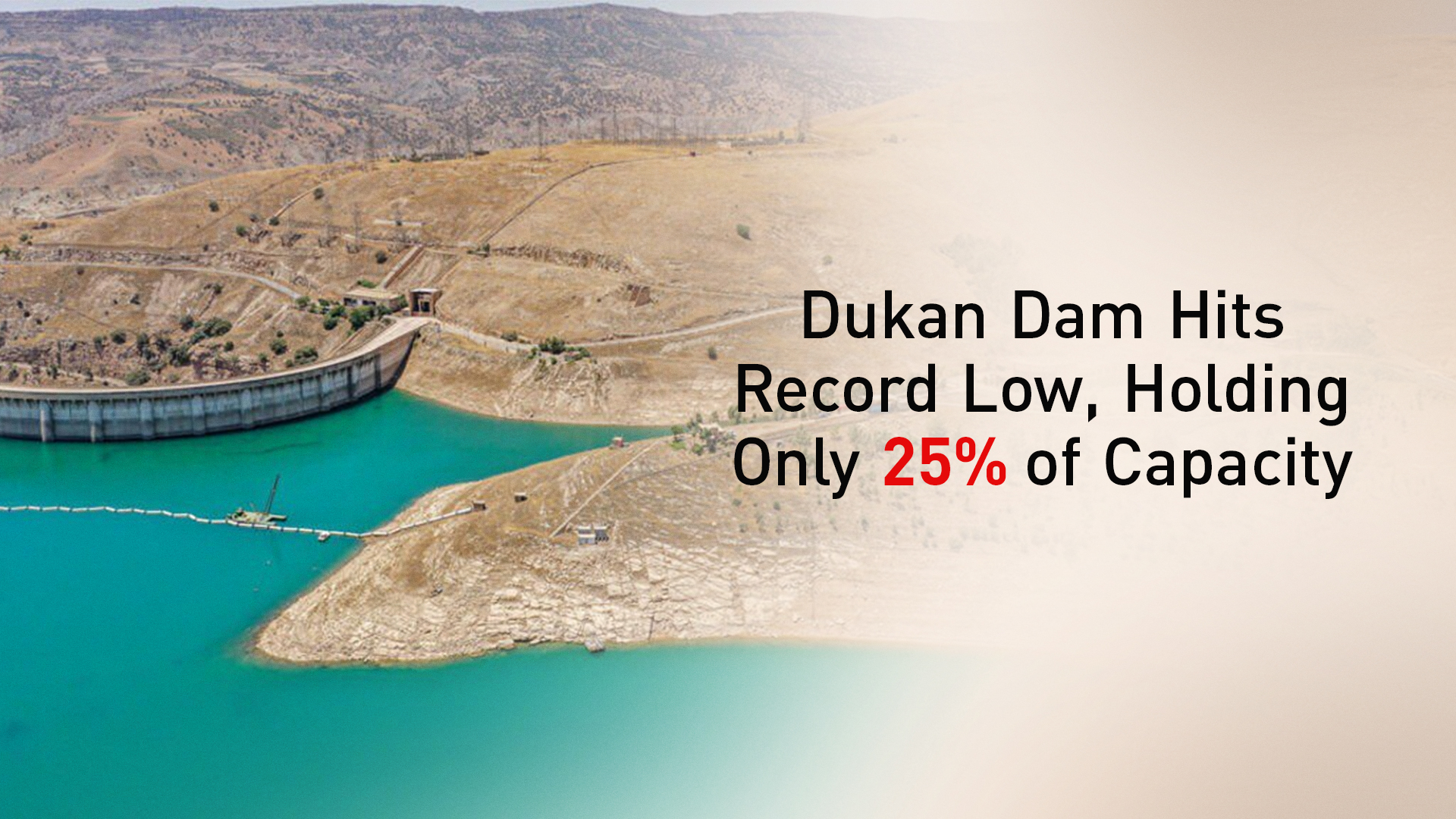Dukan Dam Records Lowest Water Level in 60 Years
Dukan Dam is at a historic low, holding just 25% of its water due to Iranian damming and dropping water levels during summer seasons.

ERBIL (Kurdistan 24) – The Dukan Dam, a cornerstone of the Kurdistan Region's water and power infrastructure, has reached a historic low, with its water level dropping by 20 meters and holding only a quarter of its total capacity due to a severe combination of upstream water cuts by Iran and a crippling drought.
According to information obtained by Kurdistan24 reporter Aras Amin on Wednesday, the dam’s water inflow is the lowest it has been in its entire 60-year history. Data from the General Directorate of Dams shows that out of a total capacity of seven billion cubic meters, only 1.75 billion cubic meters of water currently remain stored in the dam.
This sharp 75% decrease in stored water is attributed to two primary factors. Firstly, the region has experienced extremely low rainfall, with only 240 to 250 millimeters falling in the areas that feed the dam. This has caused a large portion of the dam’s shoreline to dry up.
Secondly, the construction and operation of dams by the Islamic Republic of Iran on the Little Zab River have drastically reduced the flow of water into the Kurdistan Region. This issue is part of a wider regional water crisis, where Iraq, as a downstream country, is heavily impacted by the water policies of its neighbors, Iran and Turkey. The lack of binding international water-sharing agreements leaves the Kurdistan Region and Iraq vulnerable to such upstream projects, like Iran's Kolsa Dam on the Little Zab.
Officials noted that even when Iran does release water, it is intermittent and insufficient to make a significant difference.
"The water Iran releases is intermittent. It is only released when their turbines for electricity generation units are operating, and then the flow is stopped," information from the dam authorities stated. They added that because Dukan Dam is one of the largest in Iraq, such small, sporadic inflows do not significantly raise its water level.
The crisis has profound consequences. The Dukan Dam's hydroelectric power station, with a capacity of 400 megawatts, is a vital source of electricity. Reduced water levels severely curtail its ability to generate power. Furthermore, the dam is crucial for irrigating vast agricultural areas, including the fertile plains of Kirkuk, and provides drinking water to major urban centers.
The impact is felt most acutely by those living along the river. A resident of Kela Spiyan, a village located directly on the Little Zab, lamented the change. "Previously, water was released to the dam on a schedule, but since the Islamic Republic of Iran built its dam, it no longer releases the water," he said.
While the small amounts of water released by Iran provide some benefit to local livestock owners, farmers, and fishpond projects before reaching the dam, its effect on the reservoir itself is minimal given the historic drop in its water level.
The Dukan Dam, located in Sulaymaniyah province, was constructed between 1954 and 1959 and was the first dam built in Iraq, making its current state a stark indicator of the severity of the region's water security challenges.
Kurdistan24's correspondent Aras Amin contributed to this report.
